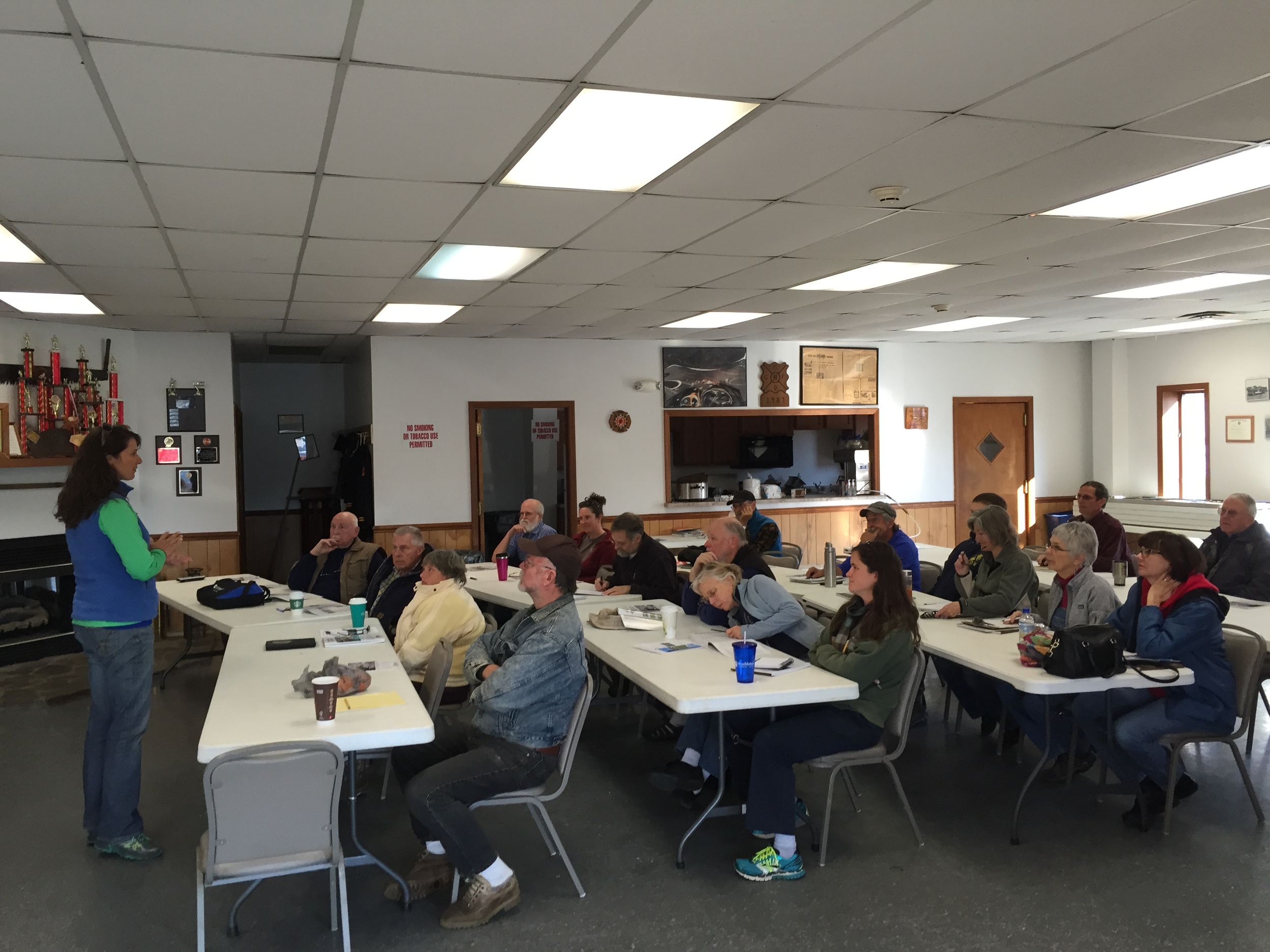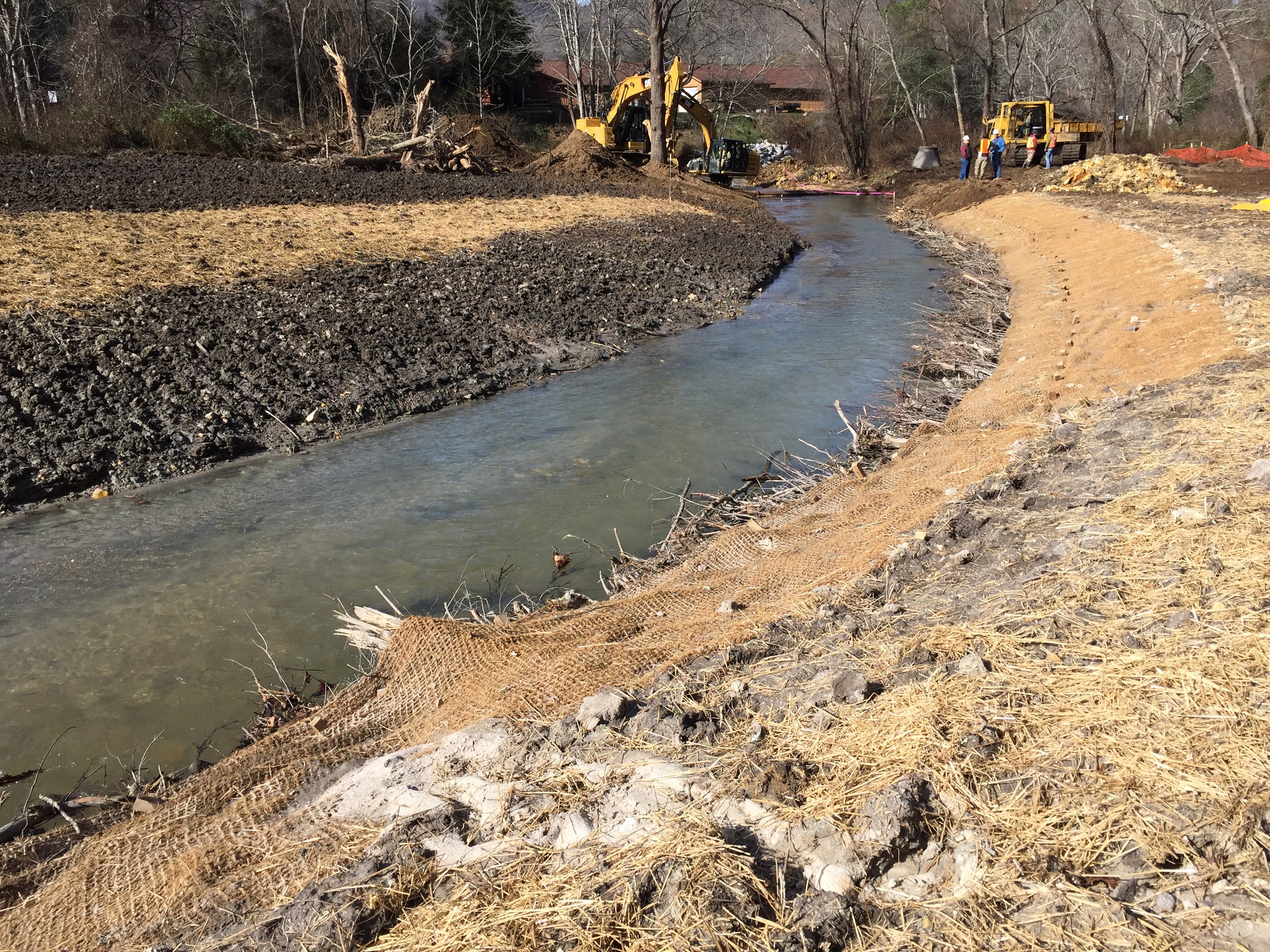Energy Cost-share Assistance Program (ECAP) website
The four North Carolina mountain RC&D's have a new website for our Energy Cost-share Assistance Program. Farmers and small businesses can navigate through the renewable energy and alternative energy cost-share and grant programs to see if they would be eligible for assistance. The ECAP partnership can provide technical assistance and resources. Please contact us with any questions.
http://www.energycap.org/
Shade Your Stream- Logo Contest
Shade Your Stream • Logo Contest
Western North Carolina conservation organizations seek a logo for the Shade Your Stream initiative
About Shade Your Stream
Shade Your Stream is a campaign to encourage landowners to plant or maintain woody plants along streams on their property. The plants’ roots hold soil in place, preventing erosion, while branches and leaves shade the stream, helping keep water temperatures cooler and more favorable to fish and other aquatic animals. The end result is that simply by planting trees and shrubs, landowners improve water quality and stream health.
Though created and first implemented in the Little Tennessee River basin of Western North Carolina, Shade Your Stream is currently being used by local watershed organizations across Western North Carolina. Implementing the campaign is typically a three-step process, 1) generating landowner interest, 2) passively providing information to landowners, and 3) actively engaging and teaching landowners.
Logo specifications
· Circular or square in shape
· Entries should be a 6” x 6” jpeg, 300 dpi. Winner must provide final logo as a vector file.
· Submission email must include the name, age, address, and email of the entrant
· Should function well in both color and black and white
· Work must be original
Selection process
· One logo will be selected by a team of stream conservation and environmental education professionals from across Western North Carolina. The creator of the winning entry will be notified by July 1, 2016.
Finalizing the logo
· The creator of the selected logo agrees to work with the selection committee to apply minor adjustments to finalize the logo. If this is not possible, another entry will be selected. Winning entry becomes the sole and exclusive property of Mainspring Conservation Trust, Inc., including all rights for use, display, copying, publishing, etc.
Prizes
· Winning designer receives $350.
Deadline for entries
· 5:00 p.m., Wednesday, June 1, 2016
Submit entries, via email, to your local conservation organization implementing Shade Your Stream:
· Cherokee or Clay County – Tony Ward, Hiwassee River Watershed Coalition, restore@hrwc.net
· Graham , Jackson, Macon, or Swain County – Jason Meador, Mainspring Conservation Trust, jmeador@mainspringconserves.org
· Henderson or Transylvania County – Tom Fanslow, Carolina Mountain Land Conservancy, tom@carolinamountain.org
· Alleghany, Ashe, Avery, Mitchell, Watuaga, Wilkes, or Yancey County – Jonathan Hartsell, Blue Ridge Resource Conservation and Development Council, jhartsell@blueridgercd.org
· Haywood County – Stephen Brinson, Haywood Waterways, stephen.haywoodwaterways@gmail.com
Shade your Stream: Streambank Repair Workshop and Livestake Giveaway
April 8, 2016, from 9am – 4pm.
Have you ever wondered how to care for your stream, but weren’t quite sure where to begin? Then this workshop is for you! Learn how to protect your property and improve the natural environment by stabilizing the stream in your backyard. Experts from NC Cooperative Extension, Stream Engineers, and Blue Ridge RC&D will provide practical, cost-effective solutions using natural materials and native plants to create a healthy streamside environment.
Across Western North Carolina, streambank erosion—and the resulting build-up of sediment in stream channels—is having negative impacts on water quality and habitat for “critters”, including trout that live in the streams. Recently, Toe River Watershed Partnership, and partners, received funding to restore a section of Grassy Creek behind the Spruce Pine Commons Shopping Center and we will get a first hand look at the restoration project and how it will connect habitat’s and clean water.
The workshop will start off at the Parkway Fire and Rescue Department for some classroom instruction and lunch, tour the Grassy Creek Restoration project and then take part in an actual "hands-on" stream repair exercise at a local property in Spruce Pine (Mitchell County, NC). Attendees will have the opportunity to observe, ask questions of experts, and install livestakes for streambank protection.
Live stakes are an effective way to reduce streambank erosion. At this point you may be wondering, “What is a live stake?” It is a long hardwood cutting from a native shrub, adapted to moist conditions, planted outdoors without rooting hormones. In the mountain region, we use silky dogwood, elderberry, ninebark, silky willow, and buttonbush.
These woody plants have extensive root systems that stabilize the soil on stream banks during rainfall and high water flow. The shade produced by the shrubs help maintain the cooler temperatures that our mountain fish and aquatic life need to survive, while the leaves help provide habitat and food for insects and fish. (Leaves fall into the stream, aquatic insects eat and live in the leaves, trout eat the insects) “Shading our Streams” with vegetation is really important because it acts as a filter to prevent sediment, fertilizers, pesticides, bacteria, pathogens, and heavy metals from entering our rivers.
At the end of the workshop, participants can take home” free” livestakes to implement the skills they just learned on their own creek banks and wet areas in the landscape. This is a free workshop, lunch will be served, but space is limited, so register soon!
Who Should Attend: HOA officers, homeowners/landowners, local government personnel, landscapers, landscape contractors, RLAs, engineers, utility workers, park managers, students and environmental educators.
Space is limited and you must register: please call or email Jonathan Hartsell at Blue Ridge RC&D (828) 284-9818 or jhartsell@blueridgercd.org
NC HWA Bio-Control Forum
The 2016 NC HWA Bio-Control Forum was a great success!! Over 130 hemlock conservationist attended the forum and represented a broad spectrum of interested stakeholders. Land trusts, RC&D's, Communities, State Agencies (Cooperative Extension, NCFS, NCWRC, NC State Parks), Federal Agencies (USFS, NPS GSMNP), Universities (UNCA, ASU, NCSU, Warren Wilson College, WCU), private consultants, arborists, foresters, hemlock conservation groups, and the Hemlock Restoration Initiative attended. The strong turn-out speaks volumes about how important saving and restoring hemlocks are to each and every one of us. Thanks to all those who attended and helped plan the meeting. The entire forum was filmed and we hope to have excerpts available in the near future. In the meantime, please enjoy some pictures from the forum.
Grassy Creek Restoration
The Grassy Creek Restoration project is a cooperative effort that includes partners such as: Toe River Watershed Partnership, Blue Ridge RC&D, Mitchell SWCD, NC Wildlife Resources Commission, US Fish & Wildlife Service, NC Division of Water Resources, National Park Service, NC State University, and local landowners.
This multi-beneficial project will improve Grassy Creek, capture and treat stormwater from impervious surfaces, and will create a section of the Mitchell County Overmountain Victory Trail! Over 2000' of Grassy Creek will be improved and will include habitat enhancements, historical channel realignment, bank stabilization with native plants, invasive species removal, and floodplain expansion. All these improvements will benefit the creek, adjacent lands, and the public. In addition, three constructed stormwater wetlands will capture and treat stormwater from the neighboring Grassy Creek Commons shopping center. Last but not least, a public trail is being developed that will be certified as a section of the nationally recognized Overmountain Victory Trail (http://www.nps.gov/ovvi/index.htm)
Beetles Save Needles Workshop
The November 2015 Beetles Save Needles workshop was a great success thanks to our growing partnership of community members interested in bio-control as a method to combat HWA. The classroom session was held at the NC Arboretum and reviewed the details of the Beetles Save Needles program. Topics covered included: how to collect, and release beetles, how to monitor beetle success, how to identify different life stages of beetles and HWA, and how to collaborate regionally to implement the program successfully and efficiently. Later that day we visited the Biltmore Estate, a developing insectary, where Dr. McDonald (Dr. Bug) demonstrated field monitoring techniques and discussed the life history status of HWA at this particular site. Bill Hascher then talked about how the Biltmore Estate is introducing Laricobius nigrinus beetle to certain areas of the property. Thanks to all who attended and look forward to building further momentum with the program!
Beetles Save Needles- Where It All Began
Blue Ridge RC&D attended a lecture by Dr. Richard McDonald at the University of Washington Arboretum. Dr. McDonald shared the history of the Hemlock Wooly Adelgid and how native beetles from the Pacific Northwest are being used to save eastern hemlock trees. We also collected beetles for shipment to western NC.
Parkway Fire and Rescue Department Stabilization Project- Ongoing Project
This project stabilized an eroding section along Grassy Creek, Mitchell County, NC. An instream j-hook structure was installed to slow and redirect water away from the streambanks. The j-hook also created a downstream pool habitat for aquatic life. Streambanks were shaped back to a more natural slope, covered with a natural matting fabric, and seeded with a native riparian seed mix. Livestakes will be installed along both banks once the dormant season has started and will provide root stabilization, habitat, and shade for Grassy Creek.























